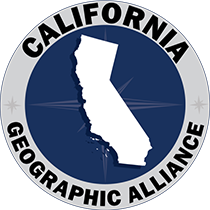The full lesson is found here: http://www.crf-usa.org/online-lessons-index/the-crisis-in-ukraine
Overview
This lesson examines the crisis in Ukraine. First, students hold a brief discussion on what they think is the most important news story going on. Then they read and discuss a background piece on the crisis in Ukraine. Next, in small groups, they role play international lawyers and analyze Ukraine’s 1994 Budapest Memorandum, an agreement among Ukraine, Russia, the U.S., and the U.K.
Objectives
Students will be able to:
-
> Explain why the protests in Ukraine took place.
> Describe the cultural divisions in Ukraine.
> Analyze and answer text-dependent questions on a primary document, citing evidence from the text (Ukraine’s Budapest Memorandum).
Standards Addressed
Common Core Standard RH.11–12.1: Cite specific textual evidence to support analysis of primary and secondary sources, connecting insights gained from specific details to an understanding of the text as a whole.
National High School Civics Standard 22: Understands how the world is organized politically into nation states, how nation states interact with one another, and issues surrounding U.S. foreign policy. (1) Understands the significance of principal foreign policies and events in the United States’ relations with the world (e.g., Monroe Doctrine, World Wars I and II, formation of the United Nations, Marshall Plan, NATO, Korean and Vietnam Wars, end of the Cold War). (12) Knows some important bilateral and multilateral agreements to which the United States is signatory (e.g., NAFTA, Helsinki Accord, Antarctic Treaty, Most Favored Nation Agreements).
California History Social Science Standard 11.9: Students analyze U.S. foreign policy since World War II.
National High School U.S. History Standard 30: Understands developments in foreign policy ….
California History–Social Science Standard 6.4: Students analyze the geographic, political, economic, religious, and social structures of the early civilizations of Ancient Greece. (1) Discuss the connections between geography and the development of city states in the region of the Aegean Sea, including patterns of trade and commerce among Greek city states and within the wider Mediterranean region. (2) Trace the transition from tyranny and oligarchy to early democratic forms of government and back to dictatorship in ancient Greece, including the significance of the invention of the idea of citizenship (e.g., from Pericles’ Funeral Oration).
National World History Standard 8: Understands how Aegean civilization emerged and how interrelations developed among peoples of the Eastern Mediterranean and Southwest Asia from 600 to 200 BCE. (1) Understands the political framework of Athenian society (e.g., the influence of Athenian political ideals on public life; major changes made to the Athenian political organization between the initial monarchy and the governments of Solon and Cleisthenes . . . ).

